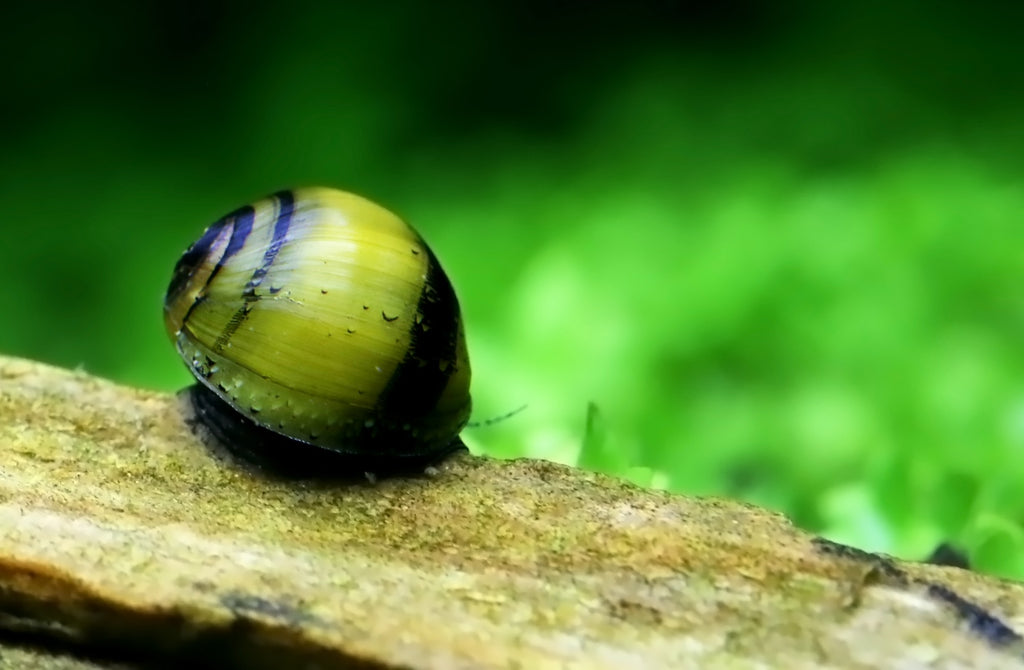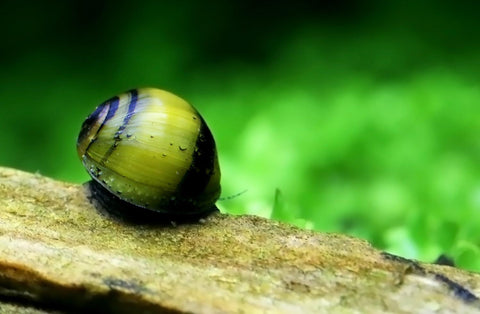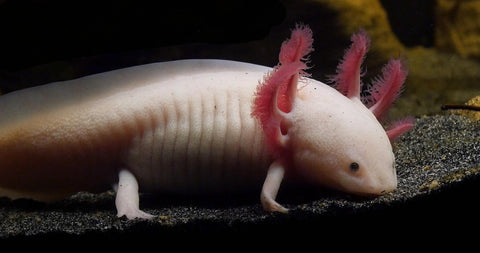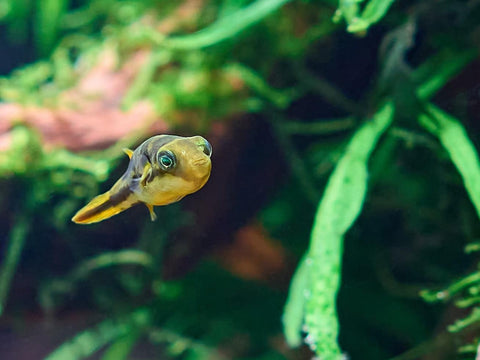Snails in aquariums are always a topic of conversation in the aquarium hobby. If you take a closer look at these topics, many of them relate to the "snail plague" or "snail invasion" in the aquarium.
It is therefore not surprising that new aquarists in particular start to sweat when they suddenly discover one or two snails in their aquarium. There is actually no reason for this, as a "snail plague" or "snail invasion" can usually be avoided quite easily.
Before we take a closer look, however, we would first like to take a closer look at the interesting aquarium inhabitants. Because snails in the aquarium do not enjoy the best reputation among many aquarists and wrongly so, in our opinion.
It should also not go unmentioned that snails are just as interesting to some aquarists as other axolotls, shrimps or fish.

Snail species in the aquarium
There are now countless species of snails that can be kept in an aquarium. However, before you decide to keep snails in an aquarium, you should, as with all other aquarium inhabitants, find out in advance what requirements these animals have in terms of aquarium size, water values, temperature and food.
It should also be noted that snails cannot be kept together with all aquarium inhabitants. There are fish and also predatory snails that "nibble" on snails or even have them on their menu. Therefore, inform yourself thoroughly in advance about the species(s) you would like to keep.

The advantages of snails in the aquarium
Snails in the aquarium are not only interesting animals, but can also have some advantages for your own aquarium
Snails as algae eaters
Many snail species are excellent algae eaters and can help you to keep algae growth in your aquarium in check. Well-known algae eaters include racing snails, antler snails, post horn snails and bladder snails. The latter is often brought into the aquarium by new aquarium plants and can multiply rapidly in fresh water.
Snails as "burrowers"
The advantage of the tower cover snail is that it lives mainly in the substrate of the aquarium. By constantly digging in the substrate, the roots of the aquarium plants are supplied with new oxygen, which can have a positive effect on the growth of the aquarium plants. In addition, digging can prevent putrefaction in the substrate and the associated putrefactive gases that can be dangerous for aquarium inhabitants.
Snails as "warning signals"
Tower snails have another advantage for an aquarium that can even save lives. If the oxygen level in an aquarium drops or there is an increase in nitrite levels, you can observe the tower cover snails climbing up the aquarium glass to reach the surface of the water. This behavior can alert you to problems. At this moment, check immediately whether your technology is working properly and whether the water values are in order. If you notice this behavior at night, there does not necessarily have to be a problem at that moment, but we still recommend that you check the technology and water values.
Tower snails have already saved one or two aquarists from losing aquarium inhabitants.
Snails as "bottom police"
Many snail species in the aquarium are on the spot if you have fed too much. In such cases, it is easy to observe how the snails scavenge the leftover food. There are also snail species that eat dead plant parts as well as food scraps. The advantage of this is that the snails can help to keep the water values in the aquarium stable.
As you will have noticed, snails are not only interesting aquarium inhabitants, but also have a number of benefits for an aquarium. Yes, they can even warn you of problems and thus protect the lives of your other aquarium inhabitants.

Snail infestation in the aquarium
If you suddenly discover snails in your aquarium, you have most likely brought them into your aquarium via the aquarium plants. In many cases, this is the bladder snail.
However, this is no reason at all to panic. Because even if the bladder snail is known for its ability to reproduce, the prerequisite for this snail species is that it finds enough food.
If the snails in your aquarium multiply uncontrollably, this is referred to as a "snail plague" or "snail invasion". An uncontrolled proliferation of snails is usually caused by excessive feeding. Many aquarists lack a sense of how much food their aquarium inhabitants need and it is not uncommon for them to overfeed. Some snail species then take advantage of this overfeeding and can multiply rapidly as a result.
If such a snail infestation / snail invasion has occurred in your aquarium, you will understandably ask yourself how you can get these snails out of your aquarium again.
Snail killers on a chemical basis are not an option and are nevertheless sometimes offered in specialist shops. The biocides they contain not only affect the snails, but also shrimps and various bottom-dwelling fish species in particular can be harmed or even die as a result.
Regardless of this, there is no other reason to resort to chemical aids to get the snail plague / snail invasion under control.
As we described above, snails multiply uncontrollably in the aquarium if there is too much food. You should therefore reduce the amount of food as a first step. If you do not have young animals in the aquarium, it is not necessary to feed the fish every day. You can easily feed the animals in your aquarium only every other day or generally set one or two food-free days per week.
Feeding less and in a more controlled manner can already greatly slow down the multiplication of snails in the aquarium. Controlled feeding in the right amount may take some time, but in the long term it is the best way to reduce the number of snails in the aquarium.
With the help of snail traps, you can reduce the number of snails in the aquarium more quickly. Alternatively, you can also place a slice of cucumber in the aquarium (please rinse thoroughly beforehand and ideally use an organic cucumber) and after a short time you can observe how the snails accumulate on the cucumber slice and then remove it from the aquarium together with the snails.
Another option is to collect the snails by hand. This method can also greatly reduce the number of snails.
Another method that is often recommended, but which we reject, is the use of fish that have snails on their menu. In our opinion, it is not a solution to keep animals just to get the snail plague / snail invasion under control. This is because these animals will continue to need snails as food even after the many snails have been removed, which would present them with new problems.
Another option is the use of predatory snails such as Anentome helena. Other snails are on their menu and it is therefore obvious that the predatory snail is often recommended. With Anentome helena, however, it is important to note that the predatory snail does not stop at snails that you would like to keep in the aquarium and the predatory snail can also multiply rapidly if fed too much. Therefore, our recommendation to get the snail plague / snail invasion under control is to feed less and in a more controlled manner, use snail traps or cucumbers and collect snails by hand.

The collected snails
What is often not mentioned is what to do with the collected snails. To avoid having to ask yourself this question in the first place, the solution, as described above, is to feed less and in a controlled manner in order to avoid a snail infestation / snail invasion.
But now back to the question of what you can do with the collected snails. Under no circumstances should you flush the snails down the toilet. On the one hand, snails are also living creatures and on the other hand, snails can survive such an "action". As many snails that are kept in our aquariums can cope with our climate, they can also pose a threat to the fauna in Switzerland at that moment.
We recommend that you offer the snails in aquarium forums or on online marketplaces for the postage costs. Owners of puffer fish and other animals that like to eat snails are usually grateful for such offers and will be very happy to take the snails off your hands.




Comments (0)
There are no comments for this article. Be the first one to leave a message!